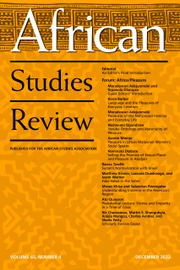The irony of A Critical History of Southern Rhodesia by Gardner Thompson is that it begins by interrogating itself: “Why a New History of Southern Rhodesia?” At stake in exploring this seemingly redundant question is that it helps reevaluate not only Zimbabwe’s past, but also her current moment. Put differently, how do we make sense of the current crisis in Zimbabwe out of its troubled past? To address this, the book revolves around three issues urgently at stake: “First, an understanding of the former colony’s history—especially the final two decades of reactionary White supremacist rule—throws light on the plight of the twenty-first century Zimbabwe: its spectacular descent “from breadbasket to basket-case,” personality rule (up to 2017) of Robert Mugabe to the current President Emmerson Mnangagwa. Second, Thompson engages “renewed discussions of empire from both sides of the Atlantic” (3). Third, he proposes a framework for making “fair judgments” about the past and historical figures (4).
Following a chronological turn of events, the book begins with Cecil John Rhodes, who, with financial resources from the British South Africa Company and political ties to the Boers and Afrikaners, sought to subjugate Africa. His deceptive Rudd Concession initiated the colonization of the major African indigenous groups, Ndebele and Shona, leading to the country being named Rhodesia after him around the 1890s. On October 1, 1923, the country was fully annexed by Britain, governed by a white minority until their Unilateral Declaration of Independence (UDI) in 1965 under Prime Minister Ian Smith. At that time, 65,000 whites dominated the lives of 1,390,000 Africans. Later, African anti-colonial leaders including Ndabaningi Sithole and Joshua Nkomo emerged, alarming White supremacists (48). To curb this, White politicians instituted segregation measures, created a two-tier electoral system in 1958 to bar Black majority rule because qualifications skewed in favor of Whites. On the global scene, Thompson asserts that World War II made it increasingly difficult to justify colonialism morally, especially with the Atlantic Charter of 1941, which deliberately excluded peoples in Europe’s African colonies from its provisions of human rights, setting the stage for “embryonic militancy among the educated African elite” such as Thompson Samkange, who led rural and urban African open protests (55).
A Critical History of Southern Rhodesia is crucially instructive as it describes two categories of White people to challenge the frequent oversimplification in previous studies about how Whites perceived their coexistence and future with Africans (61). Thompson’s reference to the award-winning literary writer Doris Lessing’s return to Rhodesia in 1956 is striking because it nuances how the newly arrived British settlers treated Africans more brutally than the earlier liberal Rhodesians. On this score, Thompson makes a substantial intervention retelling a history of Southern Rhodesia that avoids the common pitfall of homogenizing or flattening discourses that cast White settlers as solely supremacist. The book challenges straightforward assumptions that are often made about these leaders as ultra-white supremacists, providing the reader with a new perspective and framework from which to “judge” or understand Zimbabwe’s colonial past. Yet, it complicates this notion by acknowledging the contradictions that beset the seemingly liberal tendencies of Whitehead and Todd, for instance, because they would also simultaneously introduce “repressive legislation of unprecedented severity” (105).
Although A Critical History of Southern Rhodesia aims to offer a critical framework to fairly judge Zimbabwe’s colonial past, its focus on White colonists throughout most of the seven chapters is problematic due to the limited representation of Black perspectives from that era. Thompson misses an opportunity to provide a more comprehensive and a fundamentally unique aspect to his book that incorporates the perspectives of Black intellectuals and nationalist political figures about the white settlers and historical developments. Thus, in contrast to this book’s central question, one could ask: Do we need to retell the story of Rhodesia, foregrounding the White colonial rulers? Perhaps in part, if we are to consider the book’s global-focused framework on White Rhodesians’ interactions with the USA and Britain, in the case of Whitehead’s administration. Another critical intervention the book makes is highlighting the frequent oversight by many historians of this period—that Rhodesian leaders, including Whitehead and Todd, had good rapport with African nationalist leaders because they aspired to establish nonracial and inclusive political regimes; yet their attempts at liberalism suffered significant setbacks due to critical White nationalists who scathingly resented the country’s “liberal drift” (103–104).
A Critical History of Southern Rhodesia offers a fresh perspective on evaluating the complex history of Zimbabwe, from Cecil Rhodes’s colonial aspirations to the full establishment of British colonial administration in Southern Rhodesia in 1923, and up to the attainment of Zimbabwe’s Black majority rule in 1980. Since then, the book reveals that the dream of a purely democratic nation remains apparent, if not elusive, due to its Black political leaders who continue to rely on inherited colonial structures of power and repression. Hence, the book’s focus on (post)colonial Zimbabwe provides a practical case study that is in mutual dialogue with Franz Fanon’s The Wretched of the Earth (1961) and Achille Mbembe’s notion of the postcolony (see On the Postcolony, 2001). Ultimately, Thompson’s valuable intervention is that his work helps readers make sense of the current quagmire bedeviling Zimbabwe: persistent contested elections, repressive laws, a highly polarized society, and an ever-worsening economic crisis.

